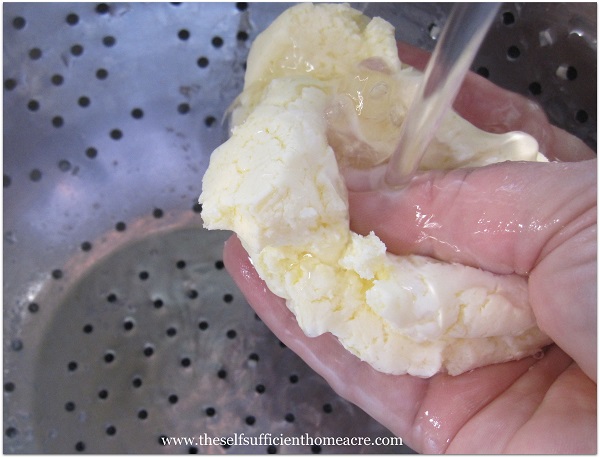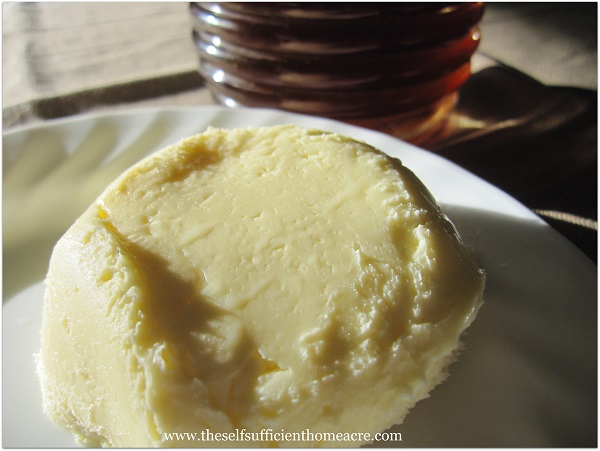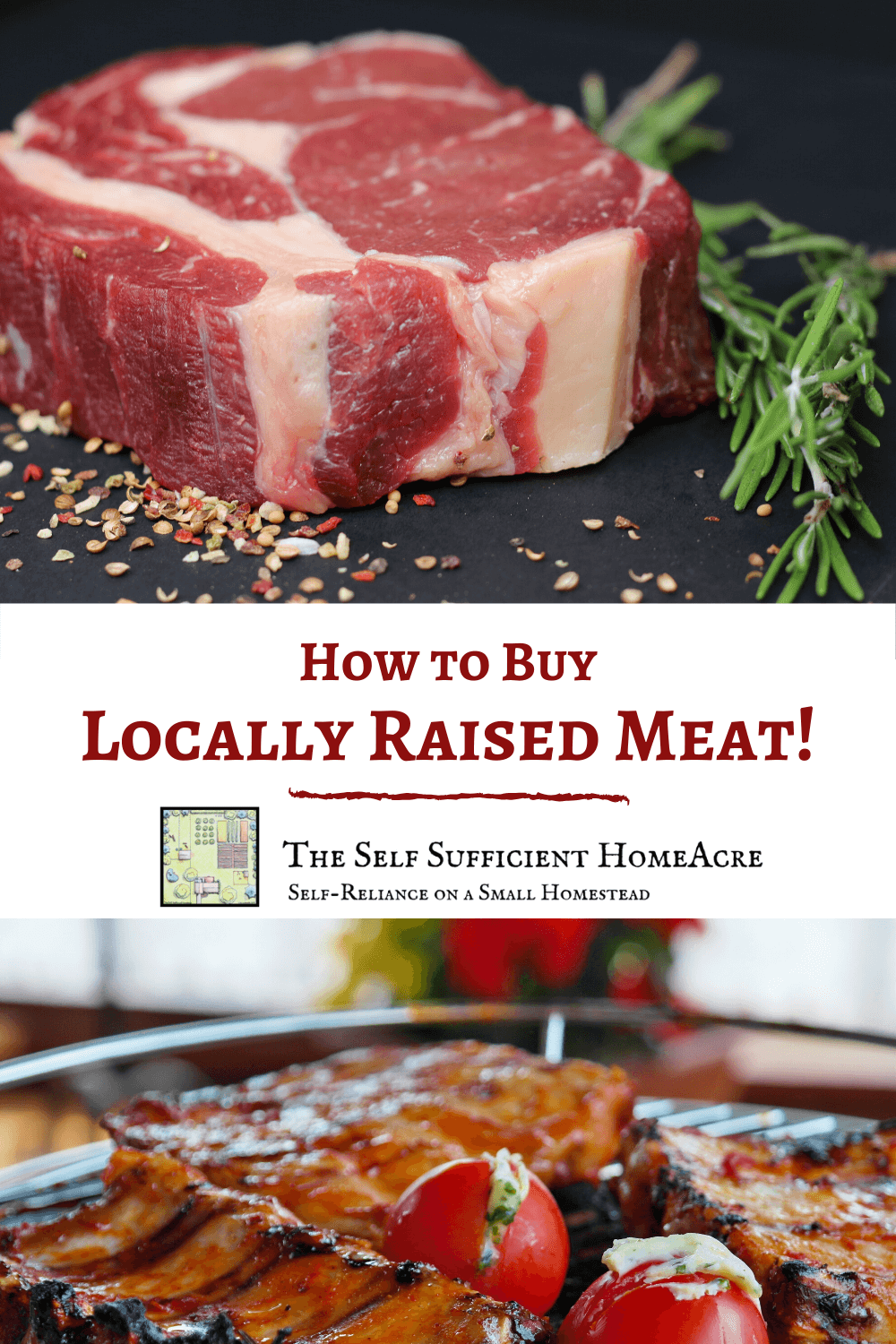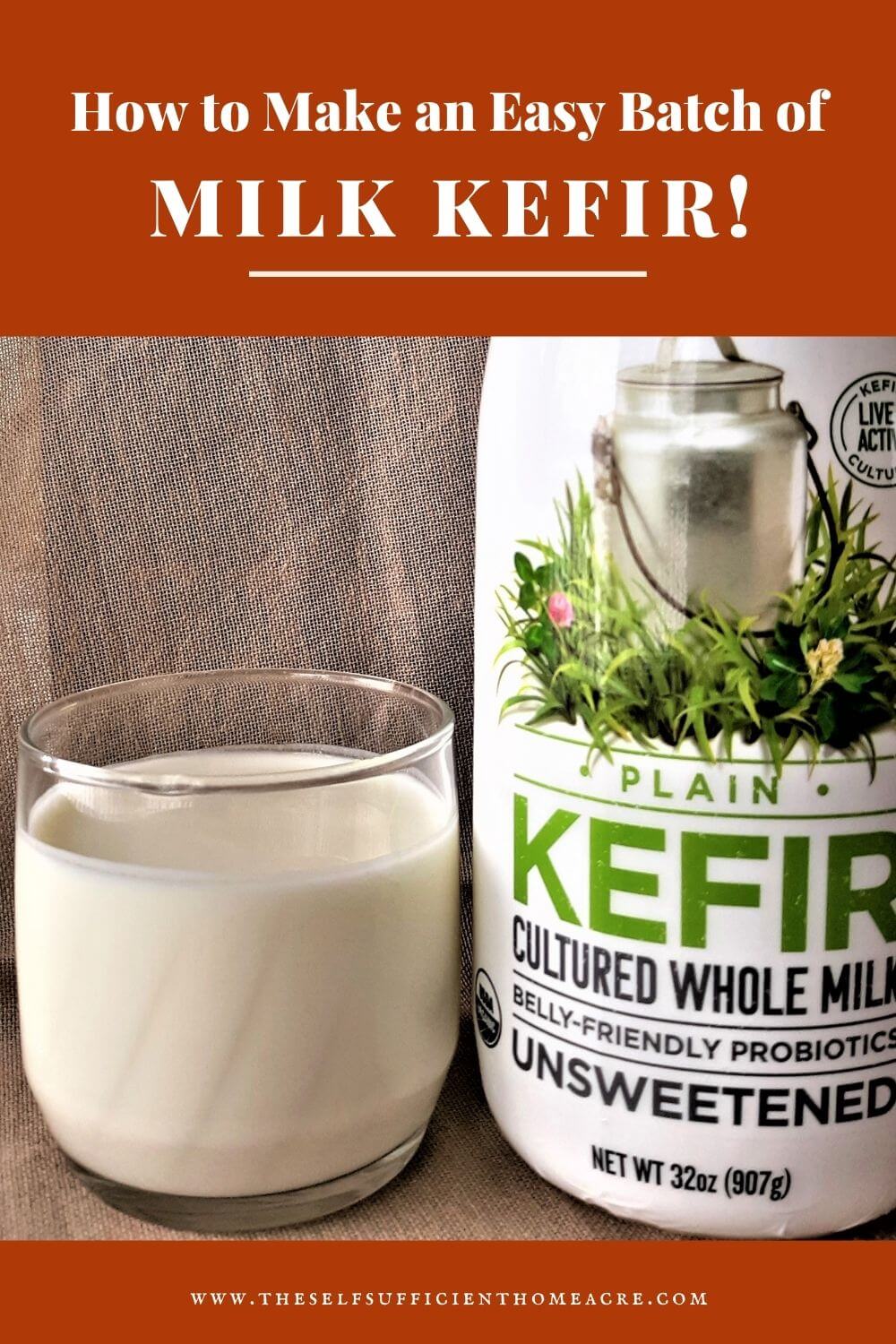Why Make Homemade Butter?
With supply chain issues and a lack of available products plaguing grocery stores, it can be difficult to find many products, including butter. The store where I shop is limited to one brand of butter and even that has been sporadic lately. Making your own homemade butter is a great skill to have when supplies are limited. If you can purchase heavy whipping cream, or if you have whole, non-homogenized milk from your own cow, butter is pretty simple to make… and it tastes even more heavenly when you create it from scratch!
Butter made from the cream given by grass-fed cows is rich in CLA (conjugated linoleic acid) and is reputed to be better for us than regular butter (and margarine). Some people prefer to consume raw dairy products, while others use pasteurized milk, cream, and butter to avoid potential contaminants. Make sure that you trust your source of raw milk or that you follow strict cleanliness protocols when milking your own cows. Strain and chill milk quickly and store it in a clean glass or stainless steel container.
Update: When I originally posted these instructions, I was using raw milk from a local farmer. Since then I have started pasteurizing milk before using it. This is a personal choice and I fully support your decision, whether you use raw milk or you choose to pasteurize it.
For more information, check out my antique Butter Mold!
This site is a participant in the Amazon Services LLC Associates Program, an affiliate advertising program designed to provide a means for me to earn fees by linking to Amazon.com and affiliated sites. You will not pay any extra for these products and I’ll earn a small commission to help support this blog.
How To Make Butter
Start with heavy whipping cream, or separate the cream from chilled, non-homogenized whole milk. The process of homogenizing breaks down fat molecules, suspending the fat in the milk and preventing the separation of the cream from the skim milk.
When starting with whole milk, skim the cream from the top to make butter or use it as heavy whipping cream. Use the skim milk on cereal, in recipes, or make your own milk kefir, buttermilk, and fresh cheeses, like cottage cheese, ricotta, farmer’s cheese, or queso fresco. For a truly old-fashioned recipe shared by one of my readers, try making a batch of traditional Dutch cheese (this is not an Edam-style cheese)!
You may also use fresh cream to make your own sour cream or cream-filled chocolates!
Butter is one of the easiest things to make. Let the milk stand for 24 to 48 hours in the refrigerator to separate into cream and skim milk. Skim the cream and pour it into your blender. You can also use a butter churn or a kitchen mixer. I used the blender and it was easy. You need to check often to see how the mixture is looking. It will go from cream to whipped cream to butter fairly quickly.
When it is ready to strain into butter and buttermilk, the fat will clump together into globs. Now it is ready to strain. Pour it into a colander (lined with cheesecloth or a linen or cotton cloth) with a bowl underneath to collect the buttermilk. You will need to lightly press on the butter to squeeze out the buttermilk.
Try not to spend too much time pressing on the butter with your warm hands. As your hands warm the butter, it will begin to melt. Next, you will rinse the remaining buttermilk out with cold water. As you run the cold water over the butter, lightly knead it with your fingers to rinse all of the buttermilk out. If you don’t get it all out, the butter will go rancid more quickly.
Pat the butter dry with a paper towel or linen cloth. Eat and enjoy, use in recipes, or refrigerate for later. You might also like my recipe for Honey Butter for a special treat!













We have been making butter from raw cream for a couple of weeks in our stand up blender. The last batch didn’t produce any butter. We left the cream out for about 5 hours (got sidetracked at a family birthday party). While blending we noticed the blender cream got very warm. We may have blended too long as we set it on blend and did some chores while it did its work. Any ideas?
Hi Kevin,
That’s a shame. I don’t know of any tricks for fixing overblended butter. Leaving it out for 5 hours should not be a problem, since I have talked to people who leave their cream out to culture and still had butter…but it had a very tangy flavor.
I would suggest using that overblended cream/butter in place of milk for pancakes, muffins, bread, etc and start with a fresh batch. Sorry to hear that!
Adding some sea salt should prevent rancidity as well. The Real Milk website can give you info on where to buy raw milk in your state. The Weston Price Foundation website is a wonderful resource for articles about the benefits of raw milk, why butter is better, and sustainable farming practices as well.
Great resource, Christine! Thanks for sharing!
Thank you for sharing this excellent tutorial with the Hearth and Soul hop! There is nothing like fresh butter both for taste and nutrition:)
Thank you April! And thanks for hosting the hop:)
Hi, I buy raw milk from a farmer down the road, and have been making butter from it for a while. I use a couple of wooden spoons to press the butter with to get the whey milk out – works a treat! My husband bought me a couple of real butter paddles to use, but the butter sticks to them and doesn’t stick to my wooden spoons, so the butter paddles stay in the drawer. Lol! I also keep my butter in the freezer and just get out enough for a day, that way I use almost all of it, instead of having to give it to the chooks (NZ-speak for hens) when it goes rancid.
Haven’t mastered the art of making cheese yet, that’s next on my list of things to try!
Hi Donna!
Thanks for visiting from down under! Cheese is on my list too! It’s funny how we get things for a specific use and then find something that works better! I’ve been rinsing my butter very thoroughly and that seems to keep it from going rancid before w can use it. But freezing is a great idea too! One of the blogs I read recommended mixing freshly harvested herbs with your butter, rolling it into a log, then slicing rounds to use in cooking and recipes. I need to try that 🙂
And I love to hear people refer to their chooks 🙂 Sounds much nicer than chickens!
Thanks for stopping by Janis! I bet strawberries would be much better than onions!!!
Lisa, same goes for cows that get into a strawberry patch!! The milk tastes AWESOME!!
I make kefir with the raw milk I buy from a local dairy with Jersey Cows. Try it. Very simple to make AND you can make cheese from it too– no cooking involved at all.
Come visit my Vermont herd when you have a chance:
http://www.tailgait.blogspot.com
All things come in a full circle! I remember my Mom bringing in the milk and straining it. We wouldn’t drink the milk because we had wild alliums in the pasture and the milk tasted like onions! So she went to the milk man delivering.
I have heard that onions and other strong flavored foods will cause the milk to have a flavor…but never experienced it. What a bummer to drink onion flavored milk!